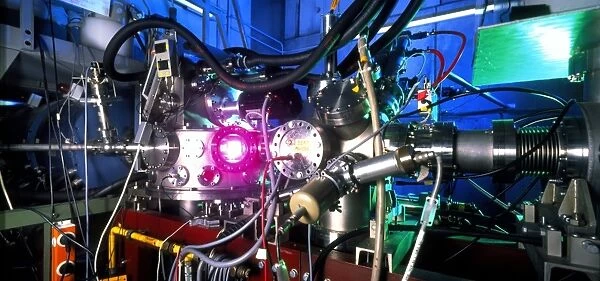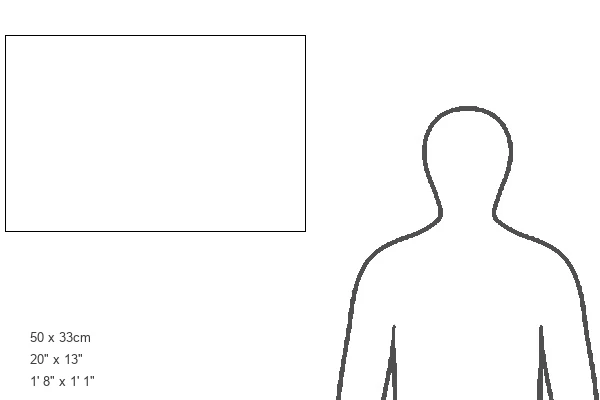Tote Bag : SHIP chamber to detect chemical elements
![]()

Home Decor from Science Photo Library
SHIP chamber to detect chemical elements
SHIP atomic fusion chamber used for creating new chemical elements at the Society for Heavy Ion Research (GSI) at Darmstadt, Germany. SHIP (Separ- ator for Heavy Ion Reaction Products) collides a beam of fast heavy ions (in tube at right) from the UNILAC accelerator into a target inside a chamber (pink). The atomic nuclei undergo fusion reactions to form new elements & forms (isotopes) of other elements. These pass through a fragment separator to a detector for identification. These elements & isotopes allow studies of the forces binding nuclei together. A GSI team led by Peter Armbruster discovered the 6 heaviest-known elements (107 to 112) during 1981-96. Photographed in 1997
Science Photo Library features Science and Medical images including photos and illustrations
Media ID 6291647
© DAVID PARKER/SCIENCE PHOTO LIBRARY
Atomic Detector Detectors Germany Particle Physics Research Ship Darmstadt
Canvas Tote Bag
Our tote bags are made from soft, durable, poly-poplin fabric and include a one inch (2.5cm) black strap for easy carrying on your shoulder. All seams are double-stitched for added durability. Each tote bag is machine-washable in cold water and is printed on both sides using the same image. Approximate size of bag is 50x33cm (20"x13")
Our tote bags are made from soft durable fabric and include a strap for easy carrying
Estimated Product Size is 50cm x 32.7cm (19.7" x 12.9")
These are individually made so all sizes are approximate
EDITORS COMMENTS
This print showcases the impressive SHIP chamber, a cutting-edge atomic fusion chamber used for detecting chemical elements. Located at the Society for Heavy Ion Research (GSI) in Darmstadt, Germany, this advanced technology plays a crucial role in creating new chemical elements. The process involves colliding a beam of fast heavy ions from the UNILAC accelerator into a target inside the pink-colored chamber depicted in the image. As these atomic nuclei undergo fusion reactions within the SHIP chamber, they give rise to novel elements and isotopes of existing ones. To identify these newly formed substances, they pass through a fragment separator before reaching a detector. This enables scientists to study and understand the forces that bind nuclei together. The GSI team led by Peter Armbruster achieved remarkable milestones using this groundbreaking equipment between 1981 and 1996. They successfully discovered six of the heaviest-known elements with atomic numbers ranging from 107 to 112. Captured in 1997, this photograph not only highlights scientific innovation but also serves as an emblem of human curiosity and determination to unravel nature's mysteries. It symbolizes our relentless pursuit of knowledge and our unwavering commitment to pushing boundaries in particle physics research.
MADE IN THE UK
Safe Shipping with 30 Day Money Back Guarantee
FREE PERSONALISATION*
We are proud to offer a range of customisation features including Personalised Captions, Color Filters and Picture Zoom Tools
SECURE PAYMENTS
We happily accept a wide range of payment options so you can pay for the things you need in the way that is most convenient for you
* Options may vary by product and licensing agreement. Zoomed Pictures can be adjusted in the Basket.



